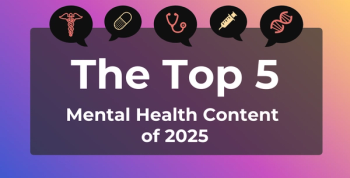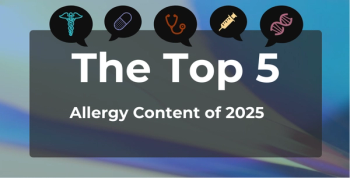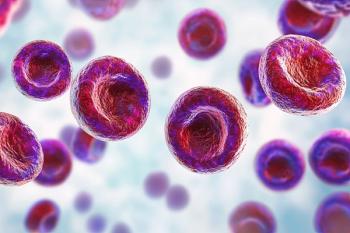
Multiple Factors Hinder Uptake of Monoclonal Antibody Therapeutics for COVID-19
The US Surgeon General, Vice Admiral Jerome Adams, MD, and other officials urged for greater uptake of FDA-approved treatments for coronavirus disease 2019 (COVID-19) in an effort to slow the surge of cases requiring hospitalization. However, logistic, monetary, and efficacy concerns may have drastically limited the amount of biologic treatments actually administered to patients.
The US Surgeon General, Vice Admiral Jerome Adams, MD, joined other top officials in urging for greater uptake of FDA approved treatments for coronavirus disease 2019 (COVID-19) in an effort to slow the surge of COVID-19 cases requiring hospitalization.
With record numbers of COVID-19 cases and
And, even as vaccine rollout begins with a newly announced
In November of 2020, the FDA granted emergency use authorizations (EUAs) for Eli Lilly’s
Adams, along with Janet Woodcock, MD, the therapeutics lead for Operation Warp Speed (OWS), John Redd, MD, the chief medical officer at the HHS Office of the Assistant Secretary for Preparedness and Response, and Col. Dedre Teyhen, the therapeutics deputy lead for OWS, implored those who become ill with COVID-19 to ask their providers about available treatments.
“If you have COVID-19 symptoms, or if you've had a high-risk exposure, we need you to get tested right away. And if you test positive, we need you to ask your provider about monoclonal antibodies as a way of keeping you out of the hospital. And if you get admitted to the hospital, ask about convalescent plasma,” Adams said.
In
But a lack of concrete, robust data regarding the efficacy of these treatments, in addition to several logistical and monetary barriers, may have prevented widespread uptake at medical centers around the country.
One major roadblock is administration. Hours-long infusion sessions with infectious patients may be outside of hospitals’ bandwidth as they struggle to keep up with the surge of COVID-19 patients. Infectious individuals also can’t receive treatment at traditional infusion sites attended by those with cancer or autoimmune diseases due to risk of transmission.
Hospital staffing shortages and struggling health care systems also could likely not accommodate an influx of COVID-19 patients who need transfusions, which are most effective during the early stages of the disease.
Some states have overcome this barrier by setting up additional infusion sites with physical support, like increased staffing and creation of new clinical spaces, from federal agencies. Officials suggested urgent care centers could serve as potential infusion sites.
An additional factor limiting uptake of monoclonal antibodies is the lack of evidence providers are used to having when recommending new treatments. The EUAs for the monoclonal antibody treatments were based on phase 2 trials with primarily virologic endpoints.
“This is an extremely rapid development program for a new product never before developed or on the US market. What the trials have shown is that giving antibodies decreases the virus in the people's body, drops it down quickly. It also shortens symptoms,” Woodcock said. “And most importantly, although that wasn't the primary endpoint of the study, but in multiple, multiple arms and evaluations, the number of people admitted to the hospital is lower for those people who received antibodies.”
Additional trials are being conducted to bolster these efficacy data, while researchers are actively looking into the monoclonal antibodies’ effects on new, more contagious variants of COVID-19. Preliminary data from manufacturers suggest both treatments should be effective on the United Kingdom strain, B117.
As monoclonal antibodies are most effective the earlier they are administered, delays in turnaround times for polymerase chain reaction (PCR) tests may compound administration barriers, though widespread use of rapid testing may alleviate this roadblock.
Cost may also play a role in the limited use of these therapies. During the briefing, Wes Hoyt, the chief of operations at Hutchinson Regional Medical Center in Kansas, outlined the system’s success with monoclonal antibodies. But “for us alone, we're in the hole over $100,000 for these infusions while we wait for codes to be entered into the governmental systems,” Hoyt said. “I can absorb that for a little while. But what if you're a smaller facility that would like to do this, but you can't afford to do so?”
A lack of consistency in the supply chain of the therapies soon after authorization also poised a hurdle for the Kansas system. Currently the federal government has purchased 1.5 million doses of antibody treatments from Regeneron and can purchase 3 million from Eli Lilly.
Despite these setbacks, Hoyt credits the therapies for reducing the center’s COVID-19 wave. “Anecdotally, I would say, we truly believe they have helped us turn the tide on our COVID-19 outbreak here in south central Kansas.”
In order for other systems across the country to increase uptake of these therapies, and to decrease the burden on hospitals as cases continue to surge, OWS officials pushed for increased public awareness.
An
Newsletter
Stay ahead of policy, cost, and value—subscribe to AJMC for expert insights at the intersection of clinical care and health economics.







































